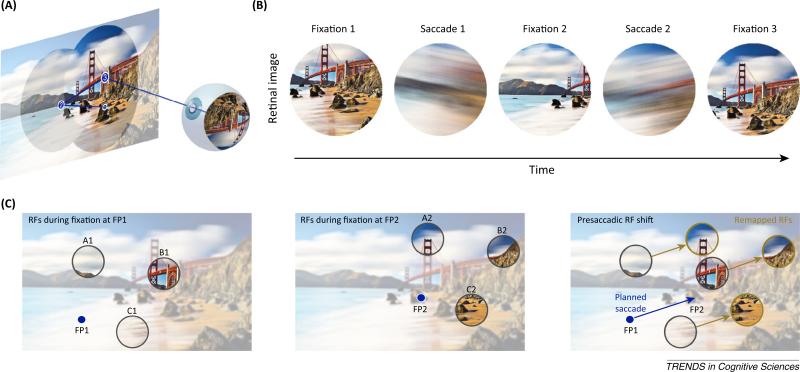Figure 1.
Saccades, visualstability, and predictive remapping. (A) Illustration of a sequence of three saccades within a visual scene. (For simplicity, only one eye is depicted.) (B) The retinal images of the three fixation periods shown together with the swift sweep of the retinal projection during saccades. Note, retinal images have been reflected horizontally and vertically. (C) Schematic display of predictive remapping. Three receptive fields (RFs) are depicted during two periods of fixation (left and middle panel) and shortly before a saccade (right panel). Following asaccade from fixation point 1 (FP1) (left panel) to FP2 (middle panel), RFs are displaced by the eye movement, and remain fixed in retinocentric coordinates. With predictive remapping (right panel), RFs are thought to shift to their future, postsaccadic, locations before the saccade begins.

